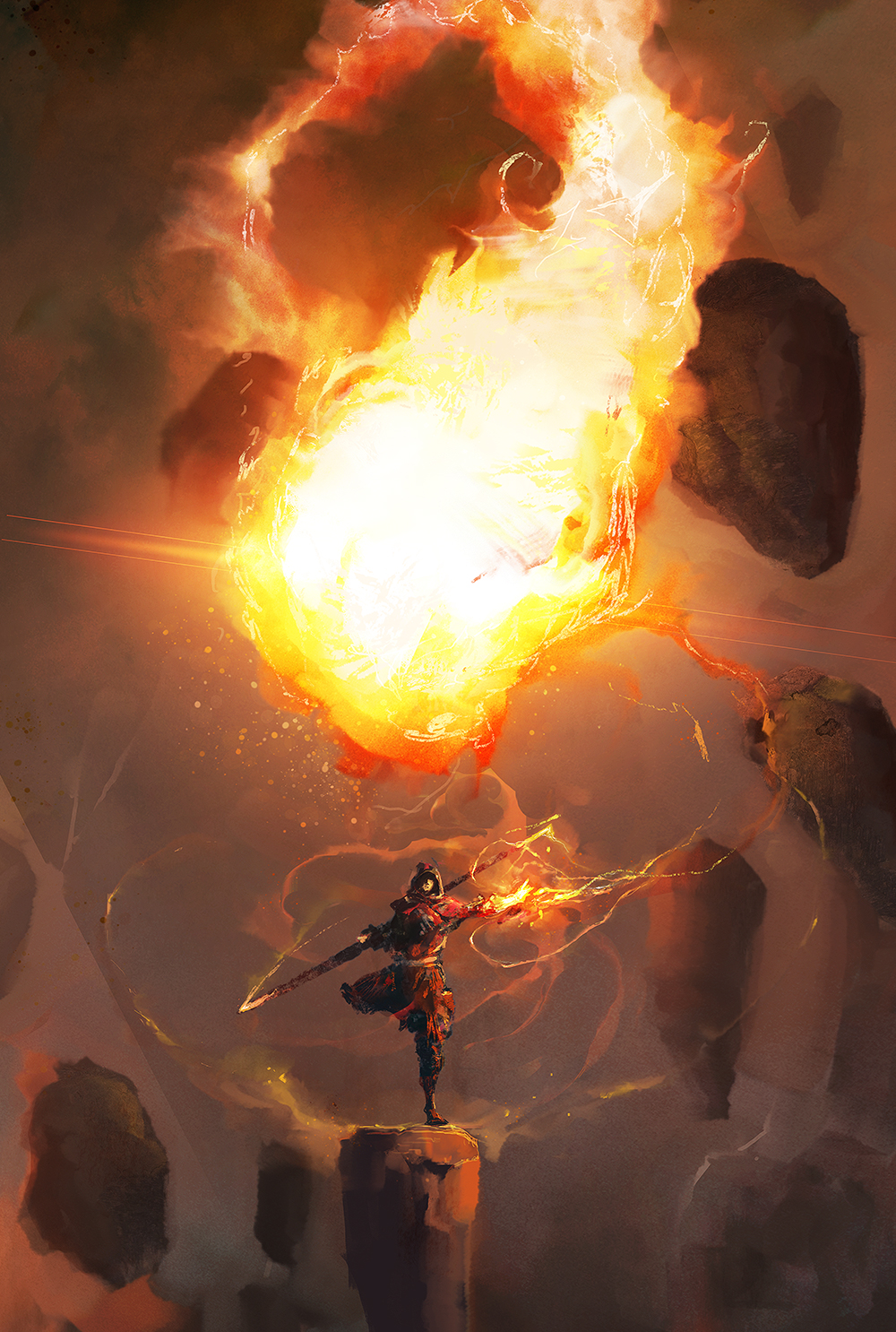
The Bending Ways
Features
Every monastic tradition grants you features at 3rd, 6th, 11th, and 17th levels. At each of these levels, you can learn a new Bending Discipline and unlock a different Chakra.
The disciplines allow you to learn magical abilities that harness the power of the chosen element. A discipline requires you to spend ki points each time you use it, unless otherwise specified. You learn a basic bending discipline and one other discipline of your choice at 3rd level. Then at 6th, 11th, and 17th levels, you gain access to a new set of disciplines and can choose an additional one. You can also replace one elemental discipline that you already know with a different discipline from the same level by meditating during a short or long rest.
The chakras grant you new advanced bending techniques. To master the element you choose, you must learn all the disciplines and unlock all of your chakras, allowing yourself to grow more powerful as you do so.
Once you reach 5th level in this class, you can spend additional ki points to increase the level of an elemental discipline spell that you cast, provided that the spell has an enhanced effect at a higher level. The spell's level increases by 1 for each additional ki point you spend. The maximum number of ki points you can spend to cast a spell in this way (including its base ki point cost and any additional ki points you spend to increase its level) is determined by your monk level, as shown in the Spells and Ki Points table. At 5th level, you may spend up to 3 ki points; this increases to 4 ki points at 9th level, 5 at 13th level, and 6 at 17th level.
| Monk Levels | Maximum Ki Points for a Spell |
|---|---|
| 5th-8th | 3 |
| 9th-12th | 4 |
| 13th-16th | 5 |
| 17th-20th | 6 |
Disclaimer
Most of the information about the philosophy and fighting styles of the bending arts in this homebrew is directly copied from the Avatar Fandom Wiki.
Also, all the images have links to where I found them at the end of the document, but I'm not sure if those are the real authors, so if you do know who they are, please let me know.


Way of Waterbending
Water is the element of change. The moon is the source of power in waterbending, and the original waterbenders learned to bend by observing how the moon pushed and pulled the tides. The fighting style of waterbending is mostly fluid and graceful, acting in concert with the environment.
Waterbenders deal with the flow of energy; they let their defense become their offense, turning their opponents' own forces against them. Even when waterbenders do take an attack stance, their moves always appear to flow from one to the other.
Waterbending Discipline I
At 3rd level, all your work finally starts to pay off and you can focus your ki to produce some waterbending tricks. You learn magical disciplines that harness the power of water. You learn the Bend Water discipline, which you always know and cannot change at later levels, plus one other waterbending discipline of your choice from the following options:
Bend Water: You can cast Shape Water at will, as a bonus action, and at a range of sight.
Glacial Armor: You can spend 2 ki points to cast Armor of Agathys.
Ice Spear: You can spend 2 ki points to cast Ice Knife.
Frozen Floor: You can spend 2 ki points to cast Ice Floor.
To cast one of these spells, you use its casting time and other rules, but you always use only somatic components, despite of the spells original components.
You can also replace one elemental discipline that you already know with a different discipline from this level by meditating during a short or long rest.
Once you reach 5th level in this class, you can spend additional ki points to increase the level of an elemental discipline spell that you cast, provided that the spell has an enhanced effect at a higher level. The spell's level increases by 1 for each additional ki point you spend. The maximum number of ki points you can spend to cast a spell in this way (including its base ki point cost and any additional ki points you spend to increase its level) is determined by your monk level, as shown in the Spells and Ki Points table.
| Monk Levels | Maximum Ki Points for a Spell |
|---|---|
| 5th-8th | 3 |
| 9th-12th | 4 |
| 13th-16th | 5 |
| 17th-20th | 6 |
Finally, Wisdom is your spellcasting ability for these spells.
Note
Some of the spells listed here are variations of already existing spells, just modified to suit specific elements.
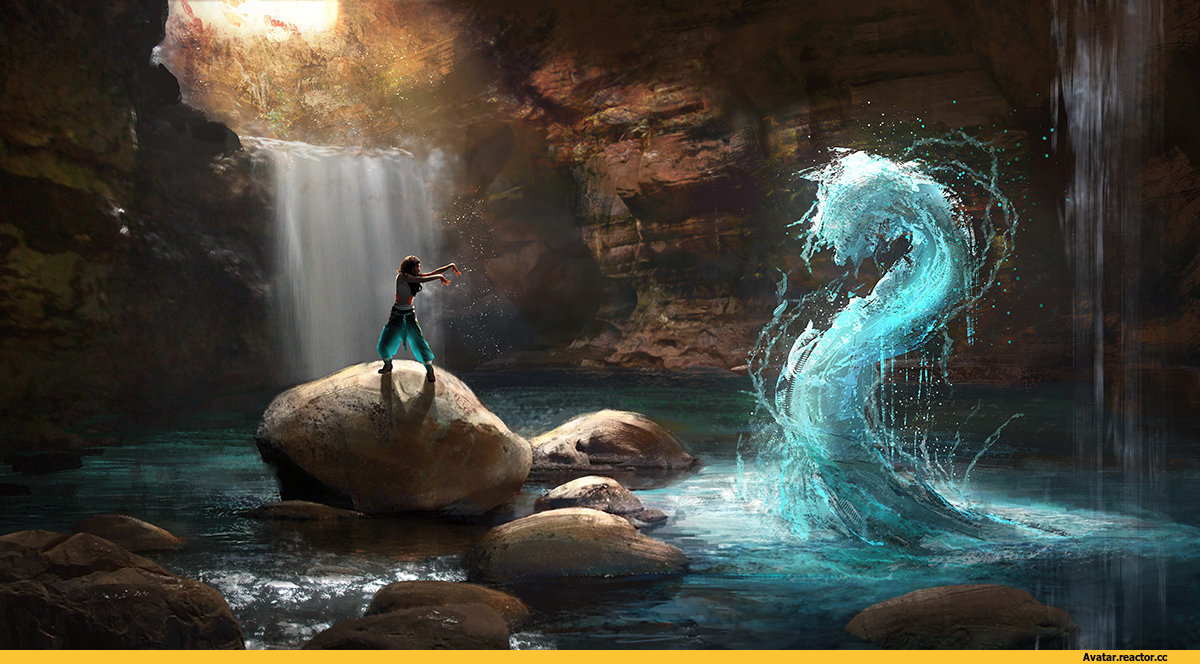

Chakra of Change
When you choose this tradition at 3rd level, you officially start your journey as a waterbender. To master the element of water you must unlock all of your chakras, growing more powerful as you do so. To unlock this chakra you must spend at least 3 hours meditating (which can be taken during a long rest) and succeed on a DC 5 Wisdom check.
The first chakra you must unlock is the Chakra of Change, which is located in the palms of your hands. When you unlock this chakra, you gain a new attack option that you can use with the Attack action called the Water Whip. This special attack is a ranged attack with a range of 15 feet, and increases by 5 feet when your Martial Arts die increases. You are proficient with it, and you add your Dexterity modifier to its attack and damage rolls. This attack produces 1d4 slashing damage. This die changes as you gain monk levels, as shown in the Martial Arts column of the Monk table. When you're able to make an unarmed strike with a Monk feature such as Extra Attack or Flurry of Blows, you can replace any of the strikes with a water whip attack, but you are unable to use the Stunning Strike ability when you hit a creature with this attack.
Additionally, you can use your action to cause numbing frost to form on one creature that you can see within 30ft. The target must make a Constitution saving throw against your ki save DC. On a failed save, the target takes 1d6 cold damage, and it has disadvantage on the next weapon attack roll it makes before the end of its next turn. This damage increases by 1d6 when you reach 5th level (2d6), 11th level (3d6), and 17th level (4d6).
Waterbending Discipline II
At 6th level, your control over your waterbending technique improves. You learn another waterbending discipline of your choice from the following options:
Snowball Rain: You can spend 3 ki points to cast Snilloc's Snowball Swarm.
Swarm of Frozen Shards: You can spend 3 ki points to cast Swarm of Frozen Shards.
Freeze Person: You can spend 3 ki points to cast Freeze Person.
You can also replace one elemental discipline that you already know with a different discipline from this level by meditating during a short or long rest.
Chakra of Spirits
At 6th level, your journey as a waterbender continues. The second chakra you must unlock is the Chakra of Spirits, which is located on the back of your tights. When you unlock this chakra, you learn that water comes with a strong destructive power, but at the same time, it possesses an even greater healing power, which you can use to help the people around you. To unlock this chakra you must spend at least 6 hours meditating (which can be taken during a long rest) and succeed on a DC 10 Wisdom check.
When you unlock this chakra, you learn a new waterbending technique called the Water Cloak, with it you can use your water as a form of armor with tentacle-like arms. You can use these arms to grab objects or enemies, or to whip enemies. If a less water is available, you can simply form the arms instead of the entire cloak.
In order to use this ability you must spend 3 ki points and your action to form the water cloak and the tendrils around yourself, only 2 ki points to only form the tendrils. The number of tendrils you're able to create equals 1/2 your monk level rounded up. After that you may use your bonus action every turn to either make a water whip attack or a grapple attack against an enemy within your water whip attack range. You require one tendril to grapple a medium or smaller creature, two for a large one, three for a huge one and five for a gargantuan one. While using your water cloak, creatures no longer gain any benefit from flanking you. Finally, this technique requires your concentration, and lasts 10 minutes. If you use your flurry of blows, you may substitute any number of unarmed or water whip attacks, for grapple attacks.
Also at 6th level, you learn how to use a unique sub-skill: the ability to heal injuries by redirecting energy paths, or ki, throughout the body, using water as a catalyst. Waterbenders can use their abilities to heal by surrounding a sick or injured person with water, which glows during the process.
As an action, you can spend 3 ki points to tend to a creature and restore a number of hit points to it equal to your martial arts dice + your Wisdom modifier + additional hit points equal to the creature's maximum number of Hit Dice. You can use this ability a number of times equal to your Wisdom modifier per long rest. Alternatively, as an action, you can spend 2 ki points to cast the Lesser Restoration spell. At 11th level, you may cast Greater Restoration for 3 ki points. And at 17th level, you may cast Revivify for 5 ki points.



Ki-Empowered Bending
Starting at 6th level, you learn how to use ki to empower even your waterbending, making you even more deadly than ever before. Your bending abilities that deal bludgeoning, slashing, or piercing damage count as magical for the purpose of overcoming resistance and immunity to nonmagical attacks and damage.
Waterbend Discipline III
At 11th level, your control over your waterbending technique improves. You learn another waterbending discipline of your choice from the following options:
Sleet Storm: You can spend 4 ki points to cast Sleet Storm.
Tidal Wave: You can spend 4 ki points to cast Tidal Wave.
Wall of Water: You can spend 4 ki points to cast Wall of Water.
You can also replace one elemental discipline that you already know with a different discipline from this level by meditating during a short or long rest.



Chakra of the Tides
At 11th level, your journey as a waterbender continues. The third chakra you must unlock is the Chakra of the Tides, which is located on your eyes. This is the defining step in your journey, because at this point you truly understand the fundamentals of waterbending. One of which is the principle of redirecting an opponents attack like the flow of water. To unlock this chakra you must spend at least 12 hours meditating and succeed on a DC 15 Wisdom check.
Whenever a creature misses you with an attack you may spend 1 ki point to make an unarmed strike against that creature as a reaction.
While unlocking this chakra, you also realize that water is everywhere around you. This lets you bend all the water around you, meaning that from this point on, you no longer need to carry water around you to bend, you can instead use the water from plants, sweat, or even in the air. But this becomes a very dangerous realization, once you know that living creatures also have water in their bodies. And so the most terrifying bending technique ever was born, one so difficult it can only be performed when a waterbender is under a full moon: the art of Bloodbending.
If you are under a full moon, as an action, you may try to impose your will over another creature that has blood. Choose a creature that you can see within 60ft of you.
It must succeed on a Wisdom saving throw or be controlled by you for up to 1 minute, requiring concentration. While the creature is being puppeteered in this way, you have control over it as long as the two of you are within 60ft of each other. From then on, you can use your action to take total control of the target. Until the end of your next turn, the creature takes only the actions you choose, and doesn't do anything that you don't allow it to do, although you cannot make it cast any spells, and it uses your Wisdom modifier for any attacks or ability checks it makes while under your control. Alternatively, you can instead move the creature up to 30 feet in any direction, including upward but not beyond the range of this ability. Until the end of your next turn, the creature is restrained in your grip. A creature lifted upward is suspended in mid-air. During this time, you can also cause the creature to use a reaction, but this requires you to use your own reaction as well. At the end of each of its turns, the target can make another Wisdom saving throw. On a success, the effect ends on the target.
Bloodbending imposes a heavy toll on both the bender and the victim. After using this ability, both you and the target make another Wisdom saving throw. The DC equals 10 + the number of turns you spent bloodbending. On a failure, roll on the Short-Term Madness table. The effects last for 1d4 rounds for the bender and 1d6 for the victim.
At 17th level, you no longer need to be under a full moon to bloodbend, but it costs 5 ki points
| d100 | Effects |
|---|---|
| 01 20 | The character retreats into his or her mind and becomes paralyzed. The effect ends if the character takes any damage. |
| 21 30 | The character becomes incapacitated and spends the duration screaming, laughing, or weeping. |
| 31 40 | The character becomes frightened and must use his or her action and movement each round to flee from the source of the fear. |
| 41 50 | The character begins babbling and is incapable of normal speech or spellcasting. |
| 51 60 | The character must use his or her action each round to attack the nearest creature. |
| 61 70 | The character experiences vivid hallucinations and has disadvantage on ability checks. |
| 71 75 | The character does whatever anyone tells him or her to do that isn't obviously self-destructive. |
| 76 80 | The character experiences an overpowering urge to eat something strange such as dirt, slime, or offal. |
| 81 90 | The character is stunned. |
| 90 100 | The character falls unconscious. |



Waterbend Discipline IV
At 17th level, your control over your waterbending technique is unmatched. You learn another waterbending discipline of your choice from the following options:
Drain: You can spend 5 ki points to cast Blight.
Control Water: You can spend 5 ki points to cast Control Water.
Watery Sphere: You can spend 5 ki points to cast Watery Sphere.
You can also replace one elemental discipline that you already know with a different discipline from this level by meditating during a short or long rest.
Chakra of the Lunar Soul
At 17th level, your journey as a waterbender is in its final stages. The fourth, and last, chakra you must unlock is the Chakra of the Lunar Soul, which is located in your heart. Unlocking this chakra brings you closer than ever to the original waterbending master, the Moon, and by focusing on your ki, you can control water just like the moon pushes and pulls the tides. To unlock this chakra you must spend at least 24 hours meditating and succeed on a DC 20 Wisdom check.
As a 1 minute ritual, you can cast Tsunami. After the tsunami ends, or your concentration is broken you are stunned for 1 round and you gain 2 levels of exhaustion. You may use this ability once per long rest.
Avatar State
At 17th level, you are granted access to the infinite wisdom of the original waterbender, the Moon, which kicks in when you are in mortal danger. When you are reduced to 0 hit points, but not killed outright, you may use your reaction to enter the Avatar State and spring back to your feet.
When you do so, you gain a number of temporary hit points equal to the amount of ki points you have left (minimum of 1), after that, your number of ki points is reduced to zero, if it isn't already. Then, as part of the same reaction, you can stand up and move, up to your movement speed, without provoking attacks of opportunity.
While in this state you carry the wisdom of all the greatest waterbending masters that already passed away. Your eyes shine with a bright white light, as ice rimes your body and you gain the following benefits:
- You are immune to cold damage and have resistance to fire damage.
- You can move across difficult terrain created by ice or snow without spending extra movement.
- The ground in a 10-foot radius around you is icy and is difficult terrain for creatures other than you. The radius moves with you.
This form lasts for 1 minute, or until you fall unconscious. After the transormation, you also gain a level of exhaustion. Once you use this feature, you can't use it again until you finish a long rest.
At 20th level, you may use this transformation as an action on your turn, without gaining temporary hit points nor levels of exhaustion at the cost of 7 ki points.



Way of Firebending
Fire is the element of power, consisting of overpowering force tempered by the unflinching will to accomplish tasks and desires, it draws its power from the sun, and the first human firebenders derived their firebending techniques from gold dragons.
Firebending is known for its intense and aggressive attacking style and general lack of adequate defensive moves, although firebenders can modify offensive maneuvers to function as a defense, such as creating large walls of fire or shooting down incoming attacks with fire jabs.
Firebending Discipline I
At 3rd level, all your work finally starts to pay off and you can focus your ki to produce some firebending tricks. You learn magical disciplines that harness the power of fire. You learn the Bend Fire discipline, which you always know and cannot change at later levels, plus one other waterbending discipline of your choice from the following options:
Bend Fire: You can cast Control Flames at will, as a bonus action, and at a range of sight.
Cinder Strike: You can spend 2 ki points to cast Burning Hands.
Burning Vengeance: You can spend 2 ki points to cast Hellish Rebuke.
Blazing Weapon: You can spend 2 ki points to cast Searing Smite.
To cast one of these spells, you use its casting time and other rules, but you don't need to provide material or verbal components for it.
You can also replace one elemental discipline that you already know with a different discipline from this level by meditating during a short or long rest.
Once you reach 5th level in this class, you can spend additional ki points to increase the level of an elemental discipline spell that you cast, provided that the spell has an enhanced effect at a higher level. The spell's level increases by 1 for each additional ki point you spend. The maximum number of ki points you can spend to cast a spell in this way (including its base ki point cost and any additional ki points you spend to increase its level) is determined by your monk level, as shown in the Spells and Ki Points table.
| Monk Levels | Maximum Ki Points for a Spell |
|---|---|
| 5th-8th | 3 |
| 9th-12th | 4 |
| 13th-16th | 5 |
| 17th-20th | 6 |
Finally, Wisdom is your spellcasting ability for these spells.


Chakra of Power
When you choose this tradition at 3rd level, you officially start your journey as a firebender. To master the element of fire you must unlock all of your chakras, growing more powerful as you do so. To unlock this chakra you must spend at least 3 hours meditating (which can be taken during a long rest) and succeed on a DC 5 Wisdom check.
The first chakra you must unlock is the Chakra of Power, which is located at the base of your spine. When you unlock this chakra, you gain a new attack option that you can use with the Attack action called a Fire Jab. This special attack is a ranged attack with a range of 15 feet, and increases by 5 feet when your Martial Arts die increases. You are proficient with it, and you add your Dexterity modifier to its attack and damage rolls. This attack produces d4 fire damage. This die changes as you gain monk levels, as shown in the Martial Arts column of the Monk table.
When you're able to make an unarmed strike with a Monk feature such as Extra Attack or Flurry of Blows, you can replace any of the strikes with this special attack, but you are unable to use the Stunning Strike ability when you hit a creature with this attack.
Additionally, you can use your action to cause flames to descend on a creature that you can see within range. The target must succeed on a Dexterity saving throw or take 1d8 fire damage. The target gains no benefit from cover for this saving throw. This damage increases by 1d8 when you reach 5th level (2d8), 11th level (3d8), and 17th level (4d8).
Firebending Discipline II
At 6th level, your control over your firebending technique improves. You learn another firebending discipline of your choice from the following options:
Scorching Ray: You can spend 3 ki points to cast Scorching Ray.
Flaming Sphere: You can spend 3 ki points to cast Flaming Sphere.
Heat Metal: You can spend 3 ki points to cast Heat Metal, at a range of touch.
You can also replace one elemental discipline that you already know with a different discipline from this level by meditating during a short or long rest.
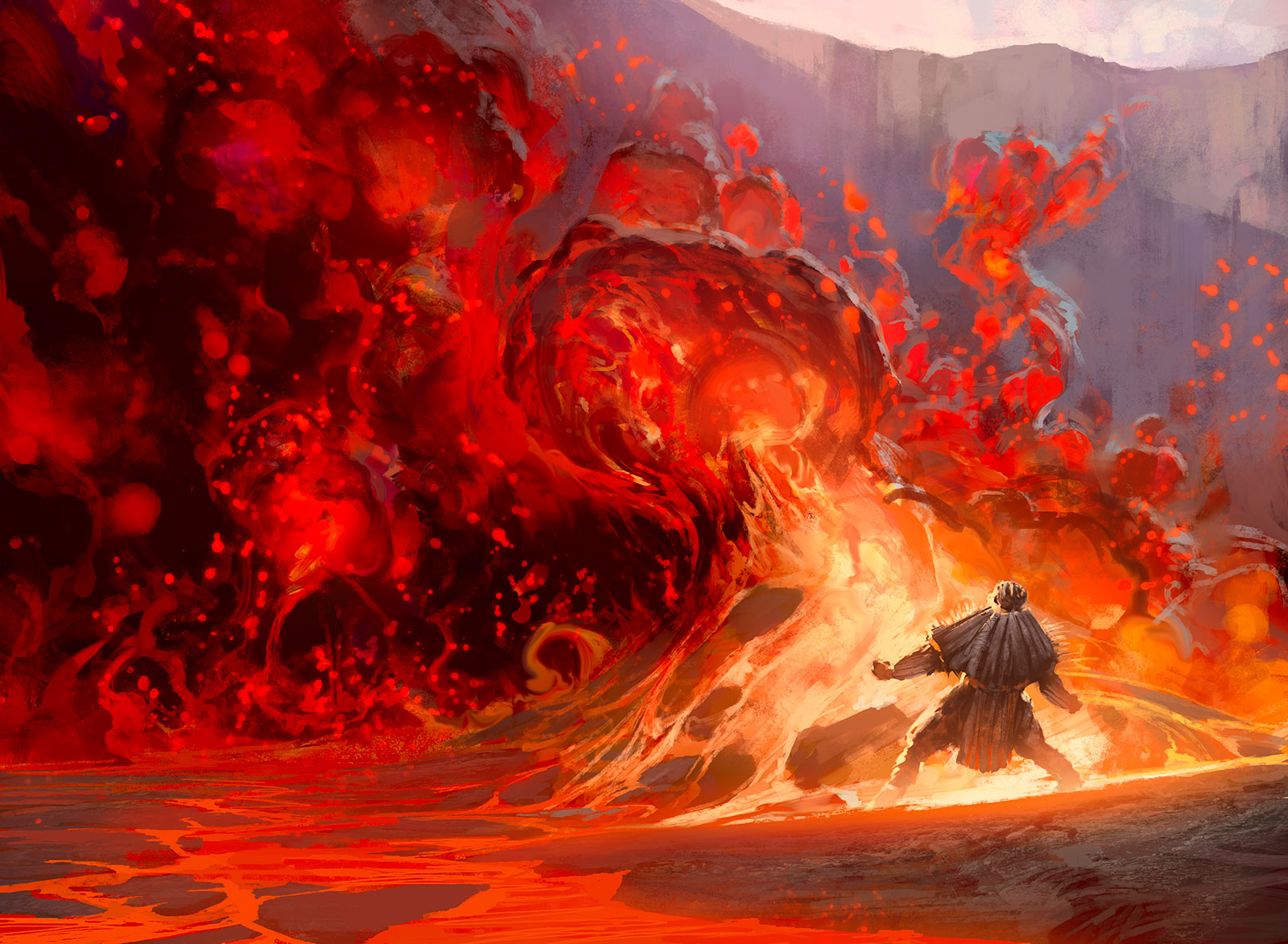



Chakra of Flames
At 6th level, your journey as a firebender continues. The second chakra you must unlock is the Chakra of Flames, which is located on your stomach. The stomach is very important in firebending, beacause it is the font of our energy. Unlocking this chakra helps you to absorb incoming energy using it in your favor, but also to protect yourself and your allies when necessary. You gain two new abilities: Fire Absorption and Fire Shield. To unlock this chakra you must spend at least 6 hours meditating (which can be taken during a long rest) and succeed on a DC 10 Wisdom check.
With fire absorption, you gain the ability to deflect and absorb fire. As a reaction to being targeted by an attack, spell or area of effect that deals fire damage, you inhale the flames, reducing the damage by 1d10 + your Wisdom modifier + your monk level. If the damage you take is reduced to zero, you can choose to exhale the energy, restoring 1 ki point, or alternatively, you can choose to keep this energy stored within you, as if you were concentraiting on a spell, and the next time you cast a spell, reduce the ki point cost by 2.
With fire shield, you gain the ability to protect yourself and your allies from incoming fire damage. As a reaction, when you or an allie within 5 feet of you is targeted by an attack, spell or area of effect that deals fire damage, you move your arms in a circular motion and make a fire swirl that absorbs the fire impact. For every ki point you spend, reduce the damage by 1d6.
Blue Fire
Also at 6th level, you learn one more technique. Only the most prestigious firerbenders are able to bend this kind of fire. Blue flames are a lot hotter than normal fire, that's because a firebender must pour their ki into their fire, this makes it magically enhanced. What this means is that your fire can overcome resistance and immunity to fire. You may use this enhancement at will on your fire jabs and shrouds of flame, but in order to use it on your disciplines, you must spend 1 ki point. This ki point doesn't count against the number of ki points you may spend on the disciplines table.



Firebending Discipline III
At 11th level, your control over your firebending technique improves. You learn another waterbending discipline of your choice from the following options:
Firestorm: You can spend 4 ki points to cast Fireball.
Fire Bolts: You can spend 4 ki points to cast Melf's Minute Meteors.
Schorching Weapon: You can spend 4 ki points to cast Fire Weapon.
You can also replace one elemental discipline that you already know with a different discipline from this level by meditating during a short or long rest.
Chakra of Balance
At 11th level, your journey as a firebender continues. The third chakra you must unlock is the Chakra of Balance, which is located on the back of your head. When you unlock this chakra, you learn one of the most advanced techniques a firebender can ever master: Lightning Generation. To unlock this chakra you must spend at least 12 hours meditating and succeed on a DC 15 Wisdom check.
Lightning Generation is an advanced sub-skill within firebending that allows the user to produce lightning by separating the positive and negative energies internally, before directing it up through the arm and out the fingertips. The technique is extremely precise and deadly and is referred to by some as the "cold blooded fire". Mentally, it involves a complete absence of emotion and peace of mind, and physically, it requires separating the energies of yin and yang, also interpreted as positive and negative electric potential respectively. When the yin and yang collide together to become whole again, lightning is created, with the bender only guiding, rather than controlling, the lightning's direction. If one attempts to conjure lightning without the required emotional discipline, it can instead result in a huge explosion of fire.
In order to conjure lightning you must spend 5 ki points and your whole turn in order to prepare the attack, that means you cannot do anything else during your turn, including using your movement or bonus action. Then, at the start of your next turn, as an action, you make a DC 12 Wisdom check. On a success you create a bolt of lightning that arcs toward a target of your choice that you can see within 100ft. The target must make a Dexterity saving throw, taking 1d8 lightning damage per your monk level on a failed save, or half as much damage on a successful one. On the other hand, if you fail the Wisdom check, the air around you ignites causing an explosion in a 10-foot-radius sphere centered on you. Each creature in this area must make a Dexterity saving throw or suffer your monk level in fire damage on a fail, or half as much on a success. You automatically fail your save.
This ability requires you to maintain your concentration, when you first start to create the lightning until the start of your next turn, when it is released. If during this time you break your concentration, the air ignites as if you had failed your Wisdom check.
At 17th level, you make a DC 7 Wisdom check instead. Additionally, the initial range increases to 150ft. You can use this ability once per short rest.
Also at 11th level, you learn how to Redirect Lightning. After observing the redirecting techniques of waterbending, firebenders developed a technique to redirect the course of lightning strikes by absorbing it through one arm, guiding it through the stomach, and out the other arm.
As a reaction, when you are targeted by an attack, spell or area of effect that deals lightning damage, you may attempt a Wisdom saving throw, with a DC equal to 10 or half the damage of that attack, whichever is lower. On a success you can redirect that attack to any creature within 100ft of you, which then, must make a Dexterity saving throw, taking the original damage on a failure or half as much on a success.


Firebending Discipline IV
At 17th level, your control over your firebending technique is unmatched. You learn another firebending discipline of your choice from the following options:
Fire Shield: You can spend 5 ki points to cast Warm Shield.
Wall of Fire: You can spend 5 ki points to cast Wall of Fire.
Fire Bane: You can spend 5 ki points to cast Fire Bane.
You can also replace one elemental discipline that you already know with a different discipline from this level by meditating during a short or long rest.
Chakra of the Dragon Soul
At 17th level, your journey as a firebender is in its final stages. The fourth, and last, chakra you must unlock is the Chakra of the Dragon Soul, which is located in your lungs. The lungs are the soul of firebending, because breathing is the key to every firebending ability. Unlocking this chakra brings you closer than ever to the original firebending masters, the Gold Dragons, and by focusing on your ki, you can conjure a flaming golden dragon. This technique is called The Dancing Dragon. To unlock this chakra you must spend at least 24 hours meditating and succeed on a DC 20 Wisdom check.
As an action, you can cast The Dancing Dragon. After the spell ends, or your concentration is broken you are stunned for 1 round and you gain 2 levels of exhaustion. You may use this ability once per long rest.
The Avatar State
When in the Avatar State, one is at its most powerful, but also as its most vulnerable. If you are killed in the Avatar State, you cannot be resurrected by any means short of a wish spell.
Avatar State
At 17th level, you are granted access to the infinite wisdom of the original firebenders, the Gold Dragons, which kicks in when you are in mortal danger. When you are reduced to 0 hit points, but not killed outright, you may use your reaction to enter the Avatar State and spring back to your feet.
When you do so, you gain a number of temporary hit points equal to the amount of ki points you have left (minimum of 1), after that, your number of ki points is reduced to zero, if it isn't already. Then, as part of the same reaction, you can stand up and move, up to your movement speed, without provoking attacks of opportunity.
While in this state you carry the wisdom of all the greatest firebending masters that already passed away. Your eyes shine with a bright white light, as flames race across your body, shedding bright light in a 30-foot radius and dim light for an additional 30 feet for the duration. The flames don't harm you. Until the transformation ends, you gain the following benefits:
- You are immune to fire damage and have resistance to cold damage.
- Any creature that moves within 5 feet of you for the first time on a turn or ends its turn there takes 1d10 fire damage.
This form lasts for 1 minute, or until you fall unconscious. After the transormation, you also gain a level of exhaustion. Once you use this feature, you can't use it again until you finish a long rest.
At 20th level, you may use this transformation as an action on your turn, without gaining temporary hit points nor levels of exhaustion at the cost of 7 ki points.




Way of Earthbending
Earth is the element of substance and the first human earthbenders derived their earthbending techniques from the migthy Tarrasque. The key to earthbending is utilizing neutral jing, which involves waiting and listening for the right moment to strike and, when that moment comes, acting decisively. In other words, earthbenders generally endure their enemies' attacks until the right opportunity to counterattack reveals itself.
Earthbenders are generally muscular, tough and direct, and like all benders, their technique reflects on their individual personalities.
Earthbending Discipline I
At 3rd level, all your work finally starts to pay off and you can focus your ki to produce some earthbending tricks. You learn magical disciplines that harness the power of earth. You learn the Bend Earth discipline, which you always know and cannot change at later levels, plus one other earthbending discipline of your choice from the following options:
Bend Earth: You can cast Mold Earth at will, as a bonus action, and at a range of sight.
Catapult Rock: You can spend 2 ki points to cast Catapult Rock.
Earth Tremor: You can spend 2 ki points to cast Earth Tremor.
Mud Floor: You can spend 2 ki points to cast Mud Floor.
To cast one of these spells, you use its casting time and other rules, but you don't need to provide material or verbal components for it.
You can also replace one elemental discipline that you already know with a different discipline from this level by meditating during a short or long rest.
Once you reach 5th level in this class, you can spend additional ki points to increase the level of an elemental discipline spell that you cast, provided that the spell has an enhanced effect at a higher level. The spell's level increases by 1 for each additional ki point you spend. The maximum number of ki points you can spend to cast a spell in this way (including its base ki point cost and any additional ki points you spend to increase its level) is determined by your monk level, as shown in the Spells and Ki Points table.
| Monk Levels | Maximum Ki Points for a Spell |
|---|---|
| 5th-8th | 3 |
| 9th-12th | 4 |
| 13th-16th | 5 |
| 17th-20th | 6 |
Finally, Wisdom is your spellcasting ability for these spells.



Chakra of Substance
When you choose this tradition at 3rd level, you officially start your journey as a earthbender. To master the element of earth you must unlock all of your chakras, growing more powerful as you do so. To unlock this chakra you must spend at least 3 hours meditating (which can be taken during a long rest) and succeed on a DC 5 Wisdom check.
The first chakra you must unlock is the Chakra of Substance, which is located in your abdomen. When you unlock this chakra, you gain a new attack option that you can use with the Attack action called the Earth Block. This special attack is a ranged attack with a range of 15 feet, and increases by 5 feet when your Martial Arts die increases. You are proficient with it, and you add your Dexterity modifier to its attack and damage rolls. This attack produces 1d4 bludgeoning damage. This die changes as you gain monk levels, as shown in the Martial Arts column of the Monk table. When you're able to make an unarmed strike with a Monk feature such as Extra Attack or Flurry of Blows, you can replace any of the strikes with an earth block attack, but you are unable to use the Stunning Strike ability when you hit a creature with this attack.
Additionally, you can use your action to smash two stones together and create a burst of thunderous sound that can be heard up to 100 feet away. Each creature within 5ft, other than you, must make a Constitution saving throw or take 1d6 thunder damage. This damage increases by 1d6 when you reach 5th level (2d6), 11th level (3d6), and 17th level (4d6).



Earthbending Discipline II
At 6th level, your control over your earthbending technique improves. You learn another earthbending discipline of your choice from the following options:
Earthen Grasp: You can spend 3 ki points to cast Maximilian's Earthen Grasp.
Shatter: You can spend 3 ki points to cast Shatter.
Spike Growth: You can spend 3 ki points to cast Spike Growth.
You can also replace one elemental discipline that you already know with a different discipline from this level by meditating during a short or long rest.
Chakra of Stones
At 6th level, your journey as an earthbender continues. The second chakra you must unlock is the Chakra of Stones, which is located on the base of your feet. When you unlock this chakra, you create a stronger connection to the earth. To unlock this chakra you must spend at least 6 hours meditating (which can be taken during a long rest) and succeed on a DC 10 Wisdom check.
When you unlock this chakra, you learn a new earthbending technique called the Stone Armor, with it you can endure the toughest of hits without even breaking a sweat. In order to use this ability you must spend 3 ki points and your action to bring rocks, dust, pebbles, or crystals around yourself and mold them to fit your body and create something similar to armor. When you do this, you gain a number of temporary hit points equal to 1/2 your level. You can use this ability once per short rest.
Also at 6th level, you learn a technique originally learned from the mighty tarrasque. You are able to sense vibrations through the ground, "seeing" by sensing your surroundings and making a mental image of it. This technique allows for a 360-degree field of "vision", outside of normal line-of-sight. But for this to work, you need direct contact with the ground, preferably without something like shoes in between. This technique is only usable on surfaces you can bend. At 6th level, you gain 10ft tremorsense, this increases to 30ft at 11th level, to 60ft at 17th level and to 100ft at 20th level.
Ki-Empowered Bending
Starting at 6th level, you learn how to use ki to empower even your earthbending, making you even more deadly than ever before. Your bending abilities that deal bludgeoning, slashing, or piercing damage count as magical for the purpose of overcoming resistance and immunity to nonmagical attacks and damage.
Earthbending
Discipline III
At 11th level, your control over your earthbending technique improves. You learn another earthbending discipline of your choice from the following options:
Erupting Earth: You can spend 4 ki points to cast Erupting Earth.
Meld into Stone: You can spend 4 ki points to cast Meld into Stone.
Wall of Sand: You can spend 4 ki points to cast Wall of Sand.
You can also replace one elemental discipline that you already know with a different discipline from this level by meditating during a short or long rest.
Chakra of Patience
At 11th level, your journey as a earthbender continues. The third chakra you must unlock is the Chakra of Patience, which is located on your knees. This is the defining step in your journey, because at this point you truly understand the fundamentals of earthbending. One of which is that there are pieces of earth in places we don't normally look for it. To unlock this chakra you must spend at least 12 hours meditating and succeed on a DC 15 Wisdom check.
When unlocking this chakra, you learn a new bending technique called Metalbending.
Metalbending is a sub-skill of earthbending that allows an earthbender to ferrokinetically bend processed metal in a similar fashion to bending regular earth. Metalbenders can also bend liquid metals, such as mercury, though they utilize more fluid movements to do so, akin to waterbending. With metalbending, all of the abilities you gain from the Bend Earth discipline now also apply to metal. Additionally, you can now spend 6 ki points to cast the spells Telekinesis and Animate Objects only targeting metal or stone objects. Finally, your Stone Armor technique now can be made of metal, costing 5 ki points and giving you temporary hit points equal to your level.
Also at 11th level, your seismic sense grows more powerful. Any creature that tries to lie to you, while within 15ft of you, must make a Charisma saving throw, on a fail, you know that they're not being truthful. An affected creature is not aware of this effect. Additionally, you don't know whether each creature succeeds or fails on its saving throw.



Earthbending
Discipline IV
At 17th level, your control over your earthbending technique is unmatched. You learn another earthbending discipline of your choice from the following options:
Stone Shape: You can spend 5 ki points to cast Stone Shape.
Stoneskin: You can spend 5 ki points to cast Stoneskin.
Fabricate: You can spend 5 ki points to cast Fabricate, but only with stone and metal.
You can also replace one elemental discipline that you already know with a different discipline from this level by meditating during a short or long rest.
Chakra of the Mountain Soul
At 17th level, your journey as a earthbender is in its final stages. The fourth, and last, chakra you must unlock is the Chakra of the Maountain Soul, which is located in your arms. Unlocking this chakra brings you closer than ever to the original earthbending master, the Tarrasque, and by focusing on your ki, you can also cause destruction in your path. To unlock this chakra you must spend at least 24 hours meditating and succeed on a DC 20 Wisdom check.
As an action, you can cast Earthquake. After the earthquake ends, or your concentration is broken you are stunned for 1 round and you gain 2 levels of exhaustion. You may use this ability once per long rest.
Avatar State
At 17th level, you are granted access to the infinite wisdom of the original earthbender, the Tarrasque, which kicks in when you are in mortal danger. When you are reduced to 0 hit points, but not killed outright, you may use your reaction to enter the Avatar State and spring back to your feet.
When you do so, you gain a number of temporary hit points equal to the amount of ki points you have left (minimum of 1), after that, your number of ki points is reduced to zero, if it isn't already. Then, as part of the same reaction, you can stand up and move, up to your movement speed, without provoking attacks of opportunity.
While in this state you carry the wisdom of all the greatest earthbending masters that already passed away. Your eyes shine with a bright white light, as bits of rock spread across your body, and you gain the following benefits:
- You have resistance to bludgeoning, piercing, and slashing damage from nonmagical attacks.
- You can move across difficult terrain made of earth or stone without spending extra movement. You can move through solid earth or stone as if it was air and without destabilizing it, but you can't end your movement there. If you do so, you are ejected to the nearest unoccupied space, this spell ends, and you are stunned until the end of your next turn.
This form lasts for 1 minute, or until you fall unconscious. After the transormation, you also gain a level of exhaustion. Once you use this feature, you can't use it again until you finish a long rest.
At 20th level, you may use this transformation as an action on your turn, without gaining temporary hit points nor levels of exhaustion at the cost of 7 ki points.
The Avatar State
When in the Avatar State, one is at its most powerful, but also as its most vulnerable. If you are killed in the Avatar State, you cannot be resurrected by any means short of a wish spell.




Way of Airbending
Air is the element of freedom and he first airbenders learned their art from the flying bison. The key to airbending is flexibility and finding and following the path of least resistance. Airbending is notable for being almost purely defensive, as well as the most dynamic of the four bending arts.
Airbenders can overwhelm many opponents at once with large and powerful attacks that could prove fatal
Airbending Discipline I
At 3rd level, all your work finally starts to pay off and you can focus your ki to produce some airbending tricks. You learn magical disciplines that harness the power of air. You learn the Bend Air discipline, which you always know and cannot change at later levels, plus one other airbending discipline of your choice from the following options:
Bend Air: You can cast Airbend at will, as a bonus action, and at a range of sight.
Enhanced Speed: You can spend 2 ki points to cast Longstrider.
Fog Cloud: You can spend 2 ki points to cast Fog Cloud.
Jump: You can spend 2 ki points to cast Jump.
To cast one of these spells, you use its casting time and other rules, but you don't need to provide material or verbal components for it.
You can also replace one elemental discipline that you already know with a different discipline from this level by meditating during a short or long rest.
Once you reach 5th level in this class, you can spend additional ki points to increase the level of an elemental discipline spell that you cast, provided that the spell has an enhanced effect at a higher level. The spell's level increases by 1 for each additional ki point you spend. The maximum number of ki points you can spend to cast a spell in this way (including its base ki point cost and any additional ki points you spend to increase its level) is determined by your monk level, as shown in the Spells and Ki Points table.
| Monk Levels | Maximum Ki Points for a Spell |
|---|---|
| 5th-8th | 3 |
| 9th-12th | 4 |
| 13th-16th | 5 |
| 17th-20th | 6 |
Finally, Wisdom is your spellcasting ability for these spells.
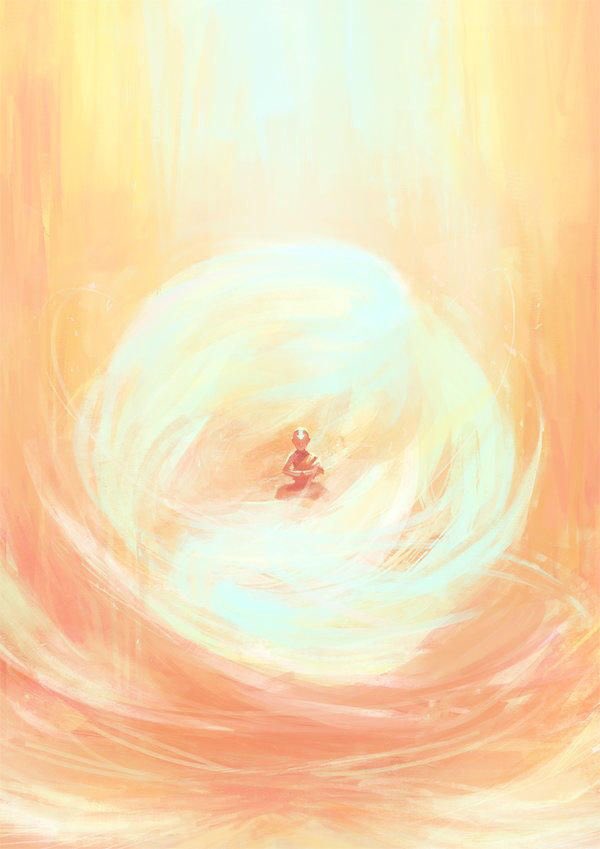

Chakra of Flexibility
When you choose this tradition at 3rd level, you officially start your journey as an airbender. To master the element of air you must unlock all of your chakras, growing more powerful as you do so. To unlock this chakra you must spend at least 3 hours meditating (which can be taken during a long rest) and succeed on a DC 5 Wisdom check.
The first chakra you must unlock is the Chakra of Flexibilty, which is located in your spine. When you unlock this chakra, you gain a new attack option that you can use with the Attack action called the Airblast. This special attack is a ranged attack with a range of 15 feet, and increases by 5 feet when your Martial Arts die increases. You are proficient with it, and you add your Dexterity modifier to its attack and damage rolls. This attack produces 1d4 piercing damage. This die changes as you gain monk levels, as shown in the Martial Arts column of the Monk table. When you're able to make an unarmed strike with a Monk feature such as Extra Attack or Flurry of Blows, you can replace any of the strikes with an air blast attack, but you are unable to use the Stunning Strike ability when you hit a creature with this attack.
Additionally, you can use your action to try to push, pull, or knock a creature prone using air. If the target is Large or smaller, it must make a Strength saving throw. On a failed save, you push or pull the target a number of feet equal to your airblast range; or knock the creature prone. At 11th level, this ability also functions on Huge creatures. At 17th level, Gargantuan creatures too.
Airbending Discipline II
At 6th level, your control over your airbending technique improves. You learn another airbending discipline of your choice from the following options:
Air Mask: You can spend 3 ki points to cast Blur.
Gust of Wind: You can spend 3 ki points to cast Gust of Wind.
Warding Wind: You can spend 3 ki points to cast Warding Wind.
You can also replace one elemental discipline that you already know with a different discipline from this level by meditating during a short or long rest.
Chakra of Lightness
At 6th level, your journey as an airbender continues. The second chakra you must unlock is the Chakra of Lightness, wich is located on the top of your head. When you unlock this chakra, you shave your head to create a stronger connection to the air. To unlock this chakra you must spend at least 6 hours meditating (wich can be taken during a long rest) and succeed on a DC 10 Wisdom check.
When you unlock this chakra, you learn a new airbending technique called the Air Shield. The most common defensive tactic for an airbender involves circling enemies, suddenly changing direction when attacked and evading by physical movement rather than bending. However, an airbender can still deflect attacks as needed by throwing up gusts of air close to their bodies as a shield.
This is rarely to stop attacks directly and more often to push the attack aside, conserving energy and allowing them to move. As a reaction, when you are hit by an attack, you can spend 2 ki points to make an air shield around you, gaining a +5 bonus to your AC only for that attack. As part of this same reaction, you may move up to your movement speed.
Also at 6th level, due to being capable of perceiving subtle shifts and vibrations in the surrounding air currents, airbenders can detect approaching threats, which gives them a split-second increase in their reaction time, similar to how earthbenders use seismic sense. You add your Wisdom modifier to Initiative checks.
Ki-Empowered Bending
Starting at 6th level, you learn how to use ki to empower even your airbending, making you even more deadly than ever before. Your bending abilities that deal bludgeoning, slashing, or piercing damage count as magical for the purpose of overcoming resistance and immunity to nonmagical attacks and damage.

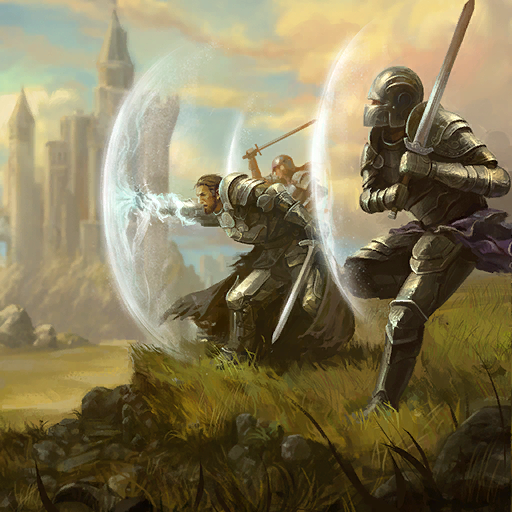

Airbending Discipline III
At 11th level, your control over your airbending technique improves. You learn another airbending discipline of your choice from the following options:
Air Sphere: You can spend 4 ki points to cast Fly.
Air Wave: You can spend 4 ki points to cast Pulse Wave.
Wind Wall: You can spend 4 ki points to cast Wind Wall.
You can also replace one elemental discipline that you already know with a different discipline from this level by meditating during a short or long rest.
Chakra of Freedom
At 11th level, your journey as an airbender continues. The third chakra you must unlock is the Chakra of Freedom, which is located on your belly. This is the defining step in your journey, because at this point you truly understand the fundamentals of airbending. To unlock this chakra you must spend at least 12 hours meditating and succeed on a DC 15 Wisdom check.
When unlocking this chakra, you learn a new technique called Airbomb. This technique creates a powerful, outward-moving air current in all directions around the bender. Usually performed after landing on the ground from above, this airbending form has great concussive force, and the capacity to completely blow away anything within its radius.
When falling from any altitude that would deal damage, you can spend 3 ki points to produce an air wave when you land on the ground. Each creature within 20 feet of the space you land must make a Strenght saving throw. A creature takes bludgeoning damage equal to 1/2 the fall damage you would originally receive if they fail, or half as much damage if they succeed. Additionally, every creature that fails the save is pushed 15 feet away from you. In addition, unsecured objects that are completely within the area are likewise pulled or pushed 15 feet.
You can use this ability once per short rest.
Also at 11th level, you learn a rather sinister technique of airbending, whereby an airbender manipulates the flow of air within a creature's respiratory system, extracting it from the lungs via the nostrils and mouth, and preventing any new intake of breath by forming a ball of air around the head, thus eventually killing the victim by suffocation.
As an action, you can choose a creature that breathes air you can see within 30ft of you and start to bend the air out of their lungs, at the cost of 5 ki points. It must succeed on a Constitution saving throw or start to suffocate. A suffocating creature can last for a number of rounds equal to its Constitution modifier, after that, it falls unconscious with all its hit points (while unconscious, it fails all saving throws automatically). At the end of each of its turns, the target can make another Constitution saving throw. On a success, the effect ends on the target.
In order for this ability to work, you must use your action to bend the air out of the creature's lungs at every consecutive turn until the creature dies or you loose your concentration.



Airbending Discipline IV
At 17th level, your control over your airbending technique is unmatched. You learn another airbending discipline of your choice from the following options:
Wind Step: You can spend 5 ki points to cast Freedom of Movement.
Air Vortex: You can spend 5 ki points to cast Gravity Sinkhole.
Spiritual Strike: You can spend 5 ki points to cast Staggering Smite.
You can also replace one elemental discipline that you already know with a different discipline from this level by meditating during a short or long rest.
Chakra of the Sky Soul
At 17th level, your journey as a airbender is in its final stages. The fourth, and last, chakra you must unlock is the Chakra of the Sky Soul, which is located on the top of your head. Unlocking this chakra brings you closer than ever to the original airbending masters, the Sky-Bisons, and by focusing on your ki, you can also cause poweful hurricanes. To unlock this chakra you must spend at least 24 hours meditating and succeed on a DC 20 Wisdom check.
As an action, you can cast Whirlwind. After the whirlwind ends, or your concentration is broken you are stunned for 1 round and you gain 2 levels of exhaustion. You may use this ability once per long rest.
Avatar State
At 17th level, you are granted access to the infinite wisdom of the original airbender, the Sky-Bison, which kicks in when you are in mortal danger. When you are reduced to 0 hit points, but not killed outright, you may use your reaction to enter the Avatar State and spring back to your feet.
When you do so, you gain a number of temporary hit points equal to the amount of ki points you have left (minimum of 1), after that, your number of ki points is reduced to zero, if it isn't already. Then, as part of the same reaction, you can stand up and move, up to your movement speed, without provoking attacks of opportunity.
While in this state you carry the wisdom of all the greatest airbending masters that already passed away. Your eyes shine with a bright white light, as wind whirls around you, and you gain the following benefits:
- Ranged weapon attacks made against you have disadvantage on the attack roll.
- You gain a flying speed of 60 feet. If you are still flying when the spell ends, you fall, unless you can somehow prevent it.
This form lasts for 1 minute, or until you fall unconscious. After the transformation, you also gain a level of exhaustion. Once you use this feature, you can't use it again until you finish a long rest.
At 20th level, you may use this transformation as an action on your turn, without gaining temporary hit points nor levels of exhaustion at the cost of 7 ki points.



The Avatar State
When in the Avatar State, one is at its most powerful, but also as its most vulnerable. If you are killed in the Avatar State, you cannot be resurrected by any means short of a wish spell.
Adapted Spells
Waterbending
Ice Floor
1st level, Conjuration
- Casting Time: 1 Action
- Range: 60ft
- Components: S
- Duration: 1 minute
A thin sheet of ice covers the ground in a 10-foot square centered on a point within range and turns it into difficult terrain for the duration.
When the ice appears, each creature standing in its area must succeed on a Dexterity saving throw or fall prone. A creature that enters the area or ends its turn there must also succeed on a Dexterity saving throw or fall prone.
Swarm of Frozen Shards
2nd level, Conjuration
- Casting Time: 1 Action
- Range: 60ft
- Components: S
- Duration: Concentration, up to 1 minute
You fill the air with spinning shards of jagged ice in a cube 5 feet on each side, centered on a point you choose within range. A creature takes 4d4 slashing damage when it enters the spell's area for the first time on a turn or starts its turn there.
At Higher Levels.
When you cast this spell using a spell slot of 3rd level or higher, the damage increases by 2d4 for each slot level above 2nd.
Freeze Person
2nd level, Transmutation
- Casting Time: 1 Action
- Range: 60ft
- Components: S
- Duration: Concentration, up to 1 minute
Choose a humanoid that you can see within range. The target must succeed on a Dexterity saving throw or be paralyzed for the duration. At the end of each of its turns, the target can make a Strenght saving throw. On a success, the spell ends on the target.
At Higher Levels.
When you cast this spell using a spell slot of 3rd level or higher, you can target one additional humanoid for each slot level above 2nd. The humanoids must be within 30 feet of each other when you target them.
Firebending
Fire Weapon
3rd level, Evocation
- Casting Time: 1 Action
- Range: Touch
- Components: S
- Duration: Concentration, up to 1 hour
A nonmagical weapon you touch becomes a magic weapon. For the duration, the weapon has a +1 bonus to attack rolls and deals an extra 1d4 fire damage when it hits.
At Higher Levels.
When you cast this spell using a spell slot of 5th or 6th level, the bonus to attack rolls increases to +2 and the extra damage increases to 2d4. When you use a spell slot of 7th level or higher, the bonus increases to +3 and the extra damage increases to 3d4.
Fire Bane
4th level, Evocation
- Casting Time: 1 Action
- Range: 90ft
- Components: S
- Duration: Concentration, up to 1 minute
Choose one creature you can see within range. The target must succeed on a Constitution saving throw or be affected by the spell for its duration. The first time each turn the affected target takes fire damage, the target takes an extra 2d6 damage of this type. Moreover, the target loses any resistance to fire damage type until the spell ends.
At Higher Levels.
When you cast this spell using a spell slot of 5th level or higher, you can target one additional creature for each slot level above 4th. The creatures must be within 30 feet of each other when you target them.
Warm Shield
4th level, Evocation
- Casting Time: 1 Action
- Range: Self
- Components: S
- Duration: 10 minutes
Choose one creature you can see within range. The target must succeed on a Constitution saving throw or be affected by the spell for its duration. The first time each turn the affected target takes fire damage, the target takes an extra 2d6 damage of this type. Moreover, the target loses any resistance to fire damage type until the spell ends.
Thin and wispy flames wreathe your body for the duration, shedding bright light in a 10-foot radius and dim light for an additional 10 feet. You can end the spell early by using an action to dismiss it. The flames provide you with a warm shield which grants you resistance to cold damage.
The Dancing Dragon
8th level, Conjuration
- Casting Time: 1 Action
- Range: 120ft
- Components: S
- Duration: Conjuration, 1 minute
By gathering threads of flames, you create a Huge fiery golden dragon in an unoccupied space that you can see within range. This dragon lasts for the spell's duration and occupies its space, as if it were a creature.
When the dragon appears, any of your enemies that can see it must succeed on a Wisdom saving throw or become frightened of it for 1 minute. If a frightened creature ends its turn in a location where it doesn't have line of sight to the dragon, it can repeat the saving throw, ending the effect on itself on a success.
As a bonus action on your turn, you can move the dragon up to 60 feet. At any point during its movement, you can cause it to exhale a blast of flames in a 60-foot cone originating from its space. Each creature in the cone must make a Dexterity saving throw, taking 7d6 fire damage on a failed save, or half as much damage on a successful one.
The dragon is tangible because of the flames used to create it, but attacks miss it automatically, it succeeds on all saving throws, and it is immune to all damage and conditions.
Earthbending
Catapult Rock
1st level, Transmutation
- Casting Time: 1 Action
- Range: 60ft
- Components: S
- Duration: Instantaneous
You bend a rock weighing 1 to 5 pounds within range that might be a part of the ground. The rock flies in a straight line up to 90 feet in a direction you choose before falling to the ground, stopping early if it impacts against a solid surface. If the rock would strike a creature, that creature must make a Dexterity saving throw. On a failed save, the rock strikes the target and stops moving. When the rock strikes something, the rock and what it strikes each take 3d8 bludgeoning damage.
At Higher Levels.
When you cast this spell using a spell slot of 2nd level or higher, the maximum weight of rocks that you can target with this spell increases by 5 pounds, and the damage increases by 1d8, for each slot level above 1st.
Mud Floor
1st level, Conjuration
- Casting Time: 1 Action
- Range: 60ft
- Components: S
- Duration: 1 minute
Slick mud covers the ground in a 10-foot square centered on a point within range and turns it into difficult terrain for the duration.
When the mud appears, each creature standing in its area must succeed on a Dexterity saving throw or fall prone. A creature that enters the area or ends its turn there must also succeed on a Dexterity saving throw or fall prone.
Airbending
Airbend
Transmutation cantrip
- Casting Time: 1 Action
- Range: 30ft
- Components: S
- Duration: Instantaneous
You seize the air and compel it to create one of the following effects at a point you can see within range:
- Control the temperature of the air around your body.
- You create a small blast of air capable of moving one object that is neither held nor carried and that weighs no more than 5 pounds. The object is pushed up to 10 feet away from you. It isn’t pushed with enough force to cause damage.
- You create a harmless sensory effect using air, such as causing leaves to rustle, wind to slam shutters shut, or your clothing to ripple in a breeze.



Practice
Safe
Homebrewing
People love to flex their creative muscles while composing new homebrew content. More often than not, the inspiration for you homebrew comes from another source. Sometimes significantly. Other times just as a spark.
What is important for the community is that you share your sources of inspiration. This back cover can serve as an easy to find, easy to read place for you to do just that.
So go ahead, remove this chunk of copy and tell everyone who inspired you.
Cover Art: Skiorh
When you're ready to share with the community, don't forget to mark your document as public so people can find it in the GM Binder Search